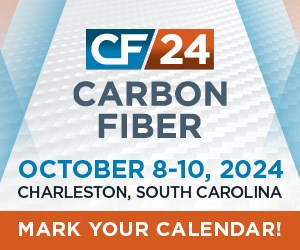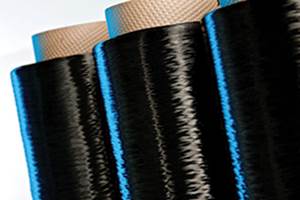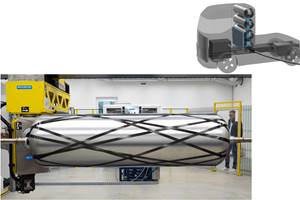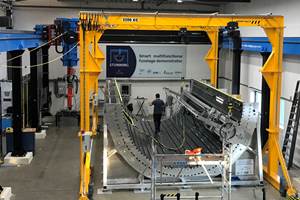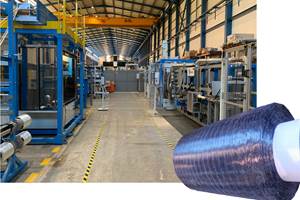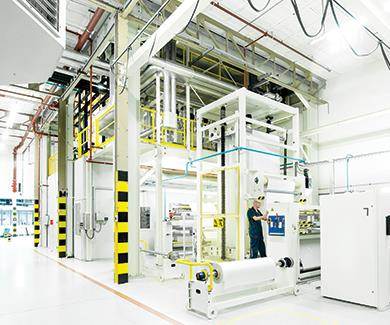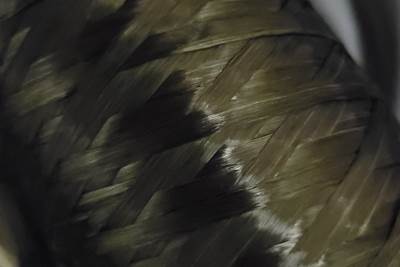Thermoplastic composites: European consortia, galore!
In addition to the Thermoplastic Composites Research Center (TPRC, Enschede, The Netherlands) — see our article focused on TPRC, titled "Thermoplastic composites technology: A view from Europe" under "Editor's Picks, at top right — there are many other European consortia, comprising private industry, university and government entities, which share the goals of exploring composites materials and methods for manufacturing them, including those with thermoplastic matrices. Here's a sampling.
There are many more European consortia, comprising private industry, university and government entities, which share the goals of exploring composites materials and methods for manufacturing them, including those with thermoplastic matrices:
The Thermoplastic Affordable Primary Aircraft Structure (TAPAS) consortium was launched in The Netherlands in 2009 with the goal of developing new thermoplastic composite materials and processes for use in Airbus (Toulouse, France) aerostructures. The consortium is starting its second phase of material and application development, and members hope, by 2017, to bring to market a thermoplastic composite fuselage and torsion-box concept that proves the viability of thermoplastics in commercial aerostructures. In addition to Airbus, the TAPAS consortium includes project lead Fokker Aerostructures (Hoogeveen), the Airborne Technology Center and Kok & Van Engelen (both based in The Hague), Dutch Thermoplastic Components (Alkmaar), Technobis Fibre Technologies (Uitgeest), TenCate Advanced Composites (Nijverdal), KE-works, CoDeT and Technische Universiteit Delft (all based in Delft), the University of Twente (Enschede) and the National Aerospace Laboratory, in Amsterdam (www.tapasproject.nl/en).
Dutch Thermoplastic Components, Kok & Van Engelen, National Aerospace Laboratory, TenCate Advanced Composites and VIRO (Hengelo, The Netherlands) are collaborating in the European Thermoplastic Automotive Composites consortium (eTAC, www.etac.info; see “New European thermoplastic automotive composites consortium established,” under "Editor's Picks," at top right).
Machinery manufacturer Pinette Emidecau (Chalon-sur-Saône, France) is part of a four-company consortium that is combining technologies to provide automated, high-speed resin transfer molding (RTM) production technology. Under the name Global RTM, headquartered in Bellignat, France, the multi-faceted supplier will build and market turnkey production systems, drawing on the expertise of its three other France-based partners: toolmaker Compose (Bellignat), injection systems specialist Isojet Equipments (Lyon) and process control/monitoring specialist S.I.S.E. (Oyonnax). The goal is to supply turnkey systems capable of producing up to 150,000 parts per year (www.globalrtm.net).
A four-year project, called WALiD (Wind Blade Using Cost-Effective Advanced Composite Light-Weight Design), partly funded by the European Commission under the 7th Framework Programme, proposes to combine process, material and design innovations and introduce a thermoplastic composite wind blade for large, offshore wind turbine installations. The WALiD consortium, which will commit a total of €5.1 million (US$5.4 million) to the project, comprises 11 European organizations, including, from Germany, the Fraunhofer Institute for Chemical Technology (ICT, Pfinztal) and Windrad Engineering GmbH (Bad Doberan); from the UK, Smithers Rapra and Smithers Pira Ltd. (Shrewesbury); from The Netherlands, TNO Netherlands Organisation for Applied Scientific Research (The Hague), PPG Industries Fibre Glass BV (Westerbroek) and NEN (Delft); from France, Loiretech SAS, Mauves sur Loire) and Coriolis Composites SAS (Queven); as well as the following: APT Archimedes Polymer Technologies (Cyprus), Norner AS (Stathelle, Norway), and Comfil ApS (Gjern, Denmark). Visit WALiD at www.eu-walid.com.
The Lightweight Integrated Process Application (LIPA) project, envisioned by Georg Kaufmann Tech-Center AG (GK-Tech-Center, Busslingen, Switzerland) seeks to develop a process of forming and “back injecting” thermoplastic prepregs or commingled thermoplastic fabrics, which the group calls “organic sheets,” to produce fiber-reinforced, lightweight thermoplastic components for eventual series production. The multi-company consortium includes GK-Tech-Center and Swiss partners ASE Industrieautomation GmbH (Näfels), Kistler Instrumente AG (Winterthur), Krelus AG (Oberentfelden) and Quadrant Plastic Composites AG (Lenzburg). The consortium has constructed a specially designed, flexible manufacturing cell at its new LIPA Development Center, in Busslingen; www.lipa-series.com/en/lipa-project.
The aim of the Stellar Project is to develop a manufacturing process for high-speed placement of carbon, glass and polymer fiber-reinforced matrices, in selected locations in a composite structure. The project will focus on development of automated tape laying (ATL) to selectively place reinforced thermoplastic tapes in three manufacturing modes: Selective reinforcement of existing components; direct additive manufacture of components; and manufacture of selectively-reinforced tailored blanks for compression molding (http://stellar-project.eu/). Partners include NetComposites Ltd. (Chesterfield, Derbyshire, UK), Toyota Motor Europe (Zaventem, Belgium), Airborne Development BV (The Hague, The Netherlands), HBW-Gubesch Thermoforming GmbH (formerly Jacob Plastics GmbH, Wilhelmsdorf, Germany), AFPT GmbH (Dörth, Germany), CGTech Ltd. (London, UK), ESI Group (Mérignac, France), Kunststoff Technik Leoben (Leoben, Austria) and Fraunhofer IPT (Aachen, Germany).
North Thin Ply Technology (NTPT, Penthalaz-Cossonay, Switzerland) has started a new research project on toughened thin-ply composites for aerospace applications, called TPCA, a two-year study. TPCA is partially funded by the Commission for Technology and Innovation (CTI) of the Swiss Confederation. NTPT joins forces with partners Huntsman (Salt Lake City, Utah and Basel, Switzerland), the Ecole Polytechnique Fédérale de Lausanne (EPFL), the University of Applied Sciences Northwestern Switzerland (FHNW), RUAG Aerostructures (Bern, Switzerland), and Decision SA (Ecublens, Switzerland). The goal of this research is to improve the toughness of thin-ply composites in order to meet or exceed aerospace requirements.
Related Content
Materials & Processes: Fibers for composites
The structural properties of composite materials are derived primarily from the fiber reinforcement. Fiber types, their manufacture, their uses and the end-market applications in which they find most use are described.
Read MoreCryo-compressed hydrogen, the best solution for storage and refueling stations?
Cryomotive’s CRYOGAS solution claims the highest storage density, lowest refueling cost and widest operating range without H2 losses while using one-fifth the carbon fiber required in compressed gas tanks.
Read MoreThermoplastic composites welding advances for more sustainable airframes
Multiple demonstrators help various welding technologies approach TRL 6 in the quest for lighter weight, lower cost.
Read MoreNovel dry tape for liquid molded composites
MTorres seeks to enable next-gen aircraft and open new markets for composites with low-cost, high-permeability tapes and versatile, high-speed production lines.
Read MoreRead Next
Thermoplastic composites technology: A view from Europe
For this Dutch consortium, bringing the manufacturability of thermoplastic materials to maturity is the goal in concert with OEMs, materials and equipment supplier members.
Read MoreFrom the CW Archives: The tale of the thermoplastic cryotank
In 2006, guest columnist Bob Hartunian related the story of his efforts two decades prior, while at McDonnell Douglas, to develop a thermoplastic composite crytank for hydrogen storage. He learned a lot of lessons.
Read MoreCW’s 2024 Top Shops survey offers new approach to benchmarking
Respondents that complete the survey by April 30, 2024, have the chance to be recognized as an honoree.
Read More

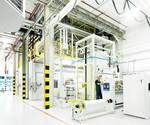
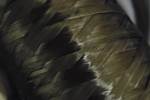

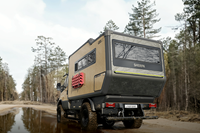

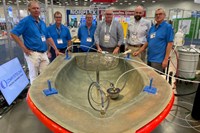
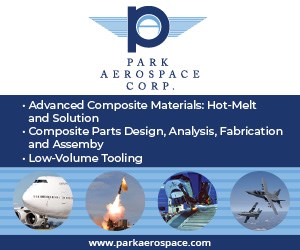


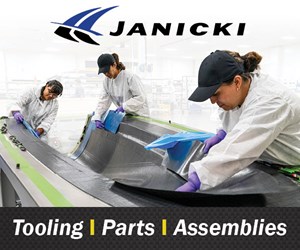

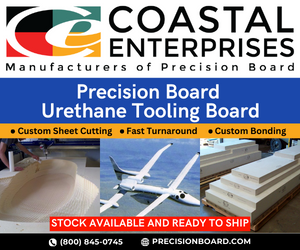


.jpg;maxWidth=300;quality=90)


